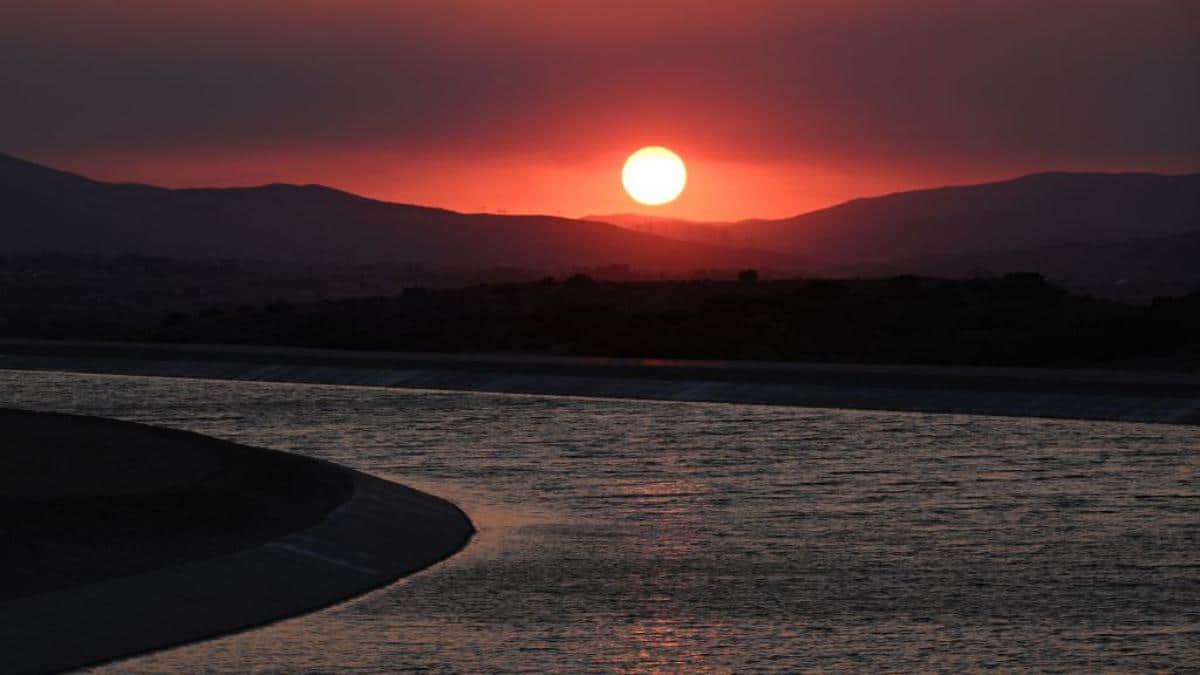
Continental U.S. Suffers Wildfires, Dangerous Flooding From Coast to Coast

The sun sets over the California Aquedect in Palmdale, California where temperatures reached 106° F on July 12, 2021. ROBYN BECK / AFP via Getty Images
Not to be outdone by the climate-fueled disasters broiling and incinerating the West, parts of the Mid-Atlantic have been deluged by torrential rain this week.
As much as 10 inches of rain fell in less than 4 hours in southeastern Pennsylvania on Monday, prompting “widespread and life-threatening flash flooding,” according to the National Weather Service. Extreme precipitation is a clear signal of human-caused climate change — warmer air can hold more moisture and can thus dump more water when it rains.
As of Tuesday morning, New York City saw rain on 9 of the 13 days so far in July for a total of 8.49 inches, and Boston’s month has been even wetter with 8.9 inches. Meanwhile, more than 14,000 firefighters across the Western U.S. are battling to contain blazes in sweltering heat.
Both extreme heat and wildfires are also clear signals of climate change.
Numerous fires in the Pacific Northwest threaten Native American lands, including in what is now north-central Washington where residents of Nespelem on the Colville Indian Agency were ordered to leave because of “imminent and life-threatening” danger from five wildfires ignited by dozens of lightning strikes Monday night.
For a deeper dive:
Rain: NBC, AP; Firefighters: AP; Tribal lands: AP, KREM; Climate Signals background: Extreme precipitation increase, Extreme heat and heatwaves, Wildfires
For more climate change and clean energy news, you can follow Climate Nexus on Twitter and Facebook, sign up for daily Hot News, and visit their news site, Nexus Media News.

 233k
233k  41k
41k  Subscribe
Subscribe 